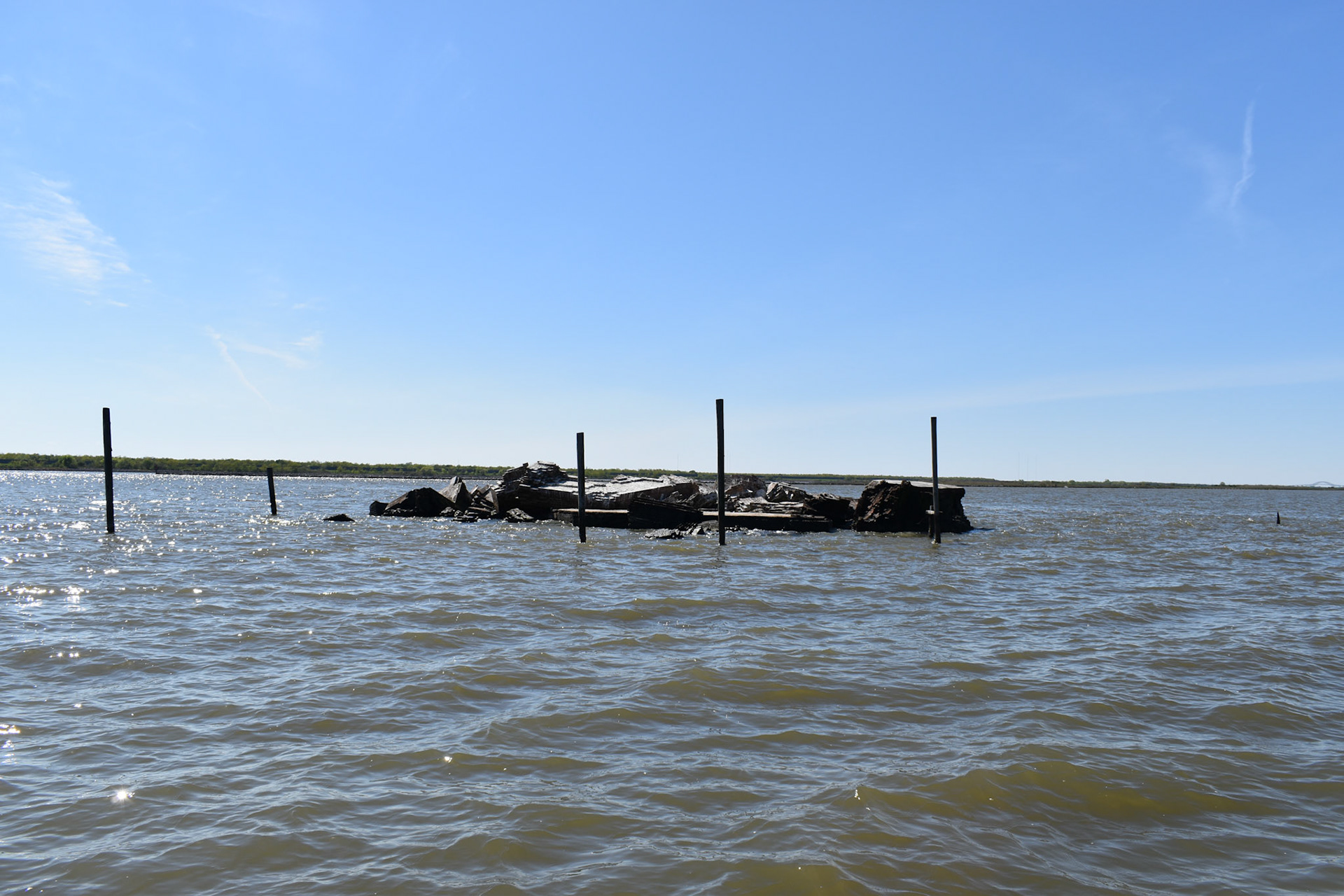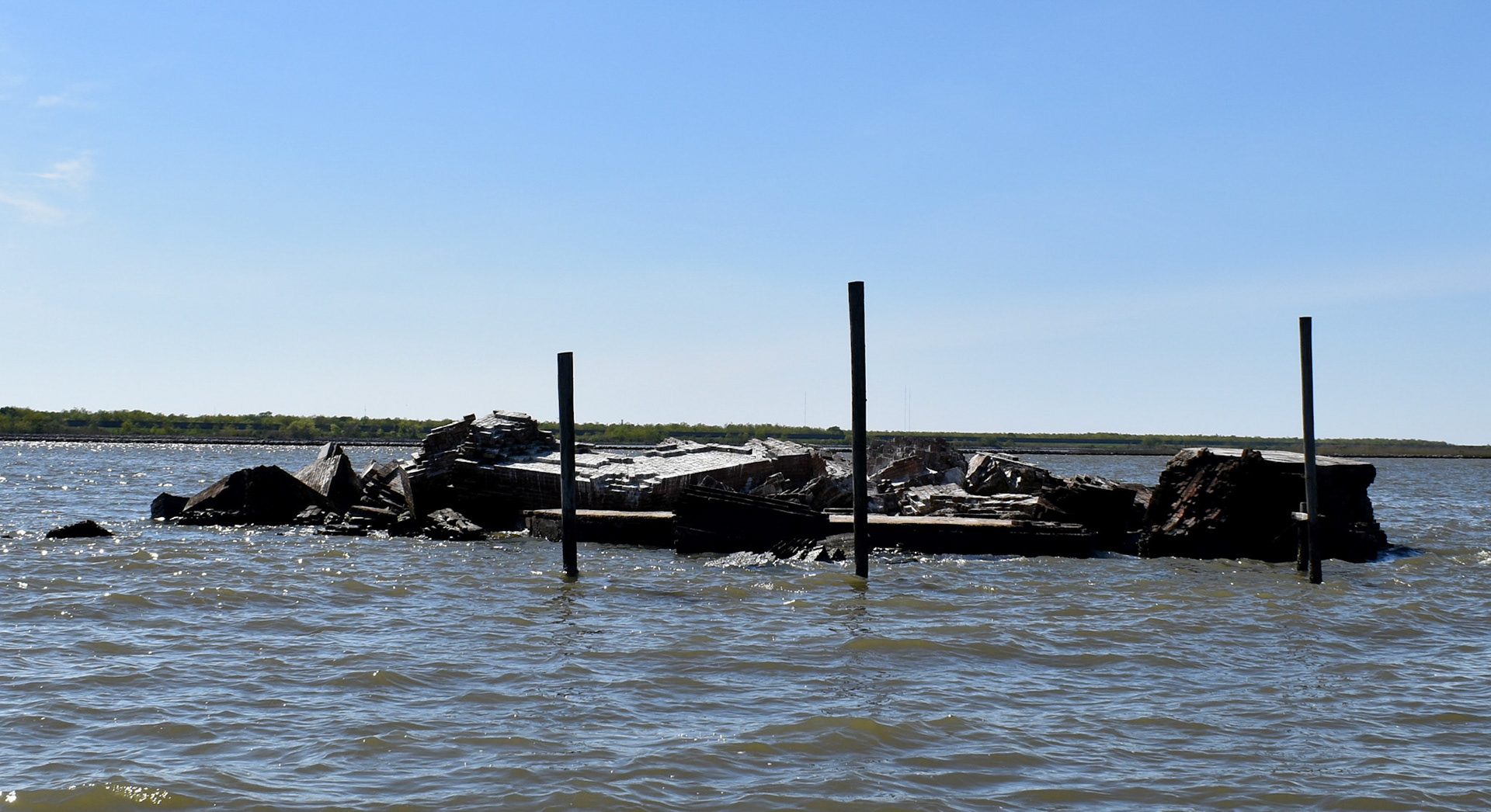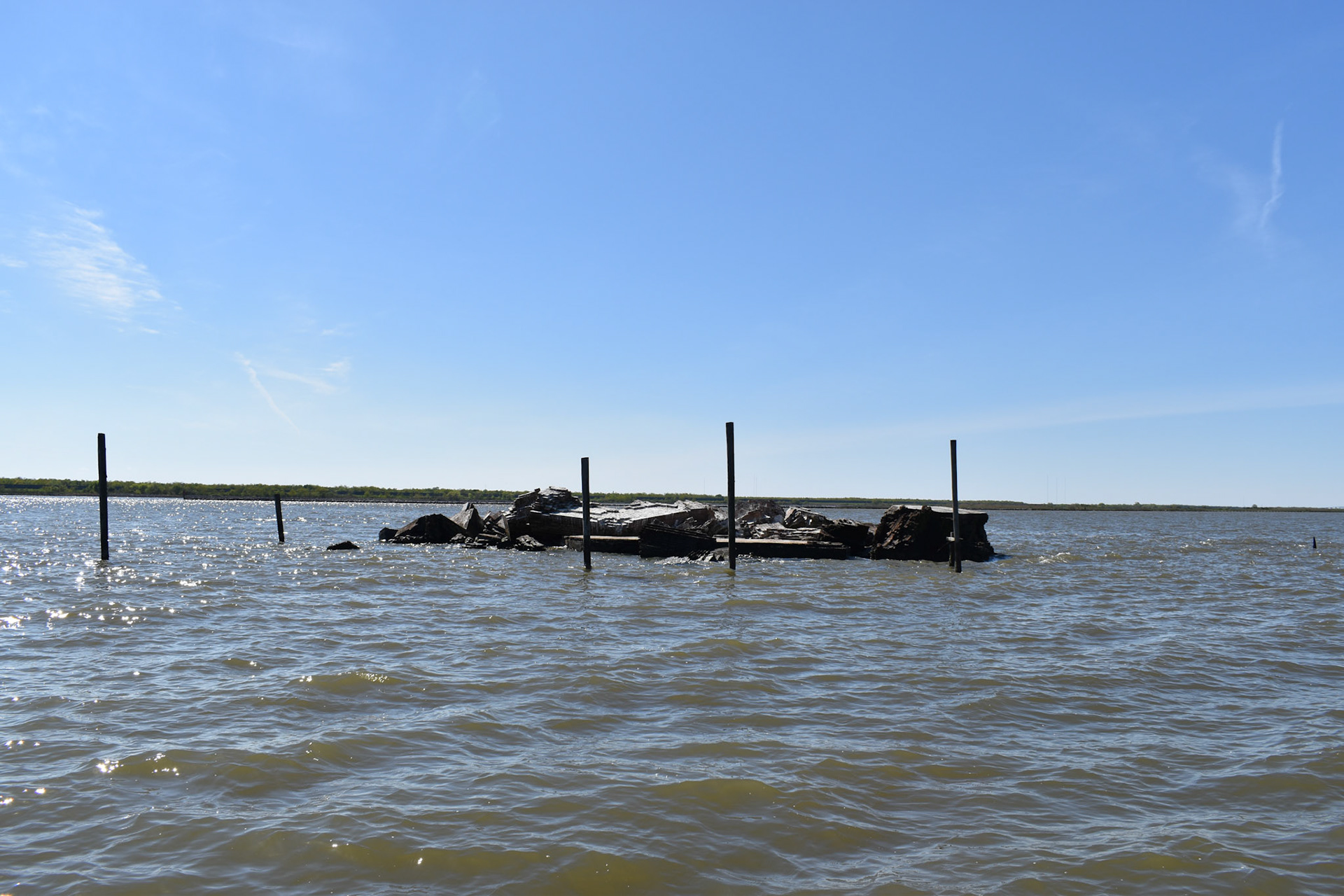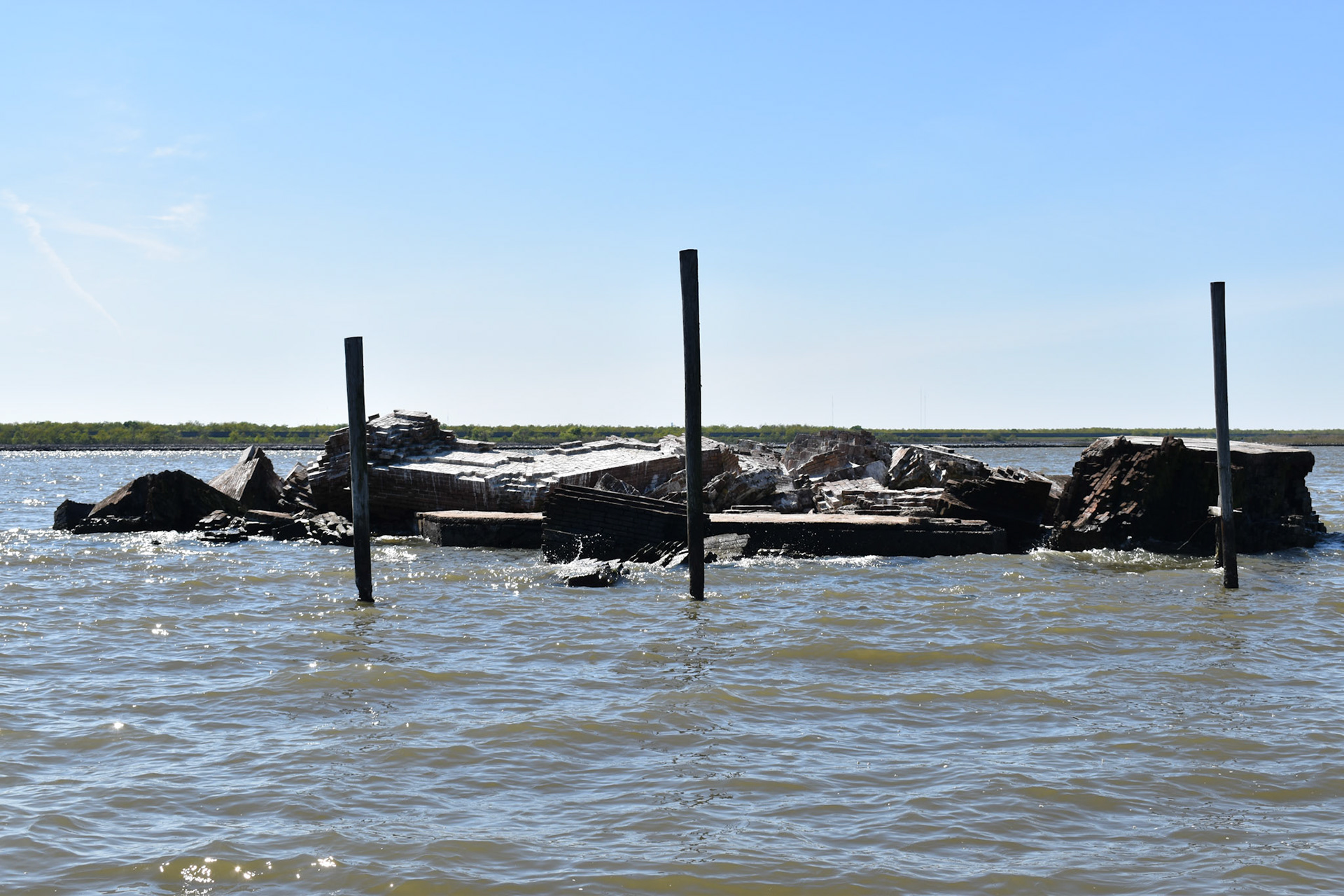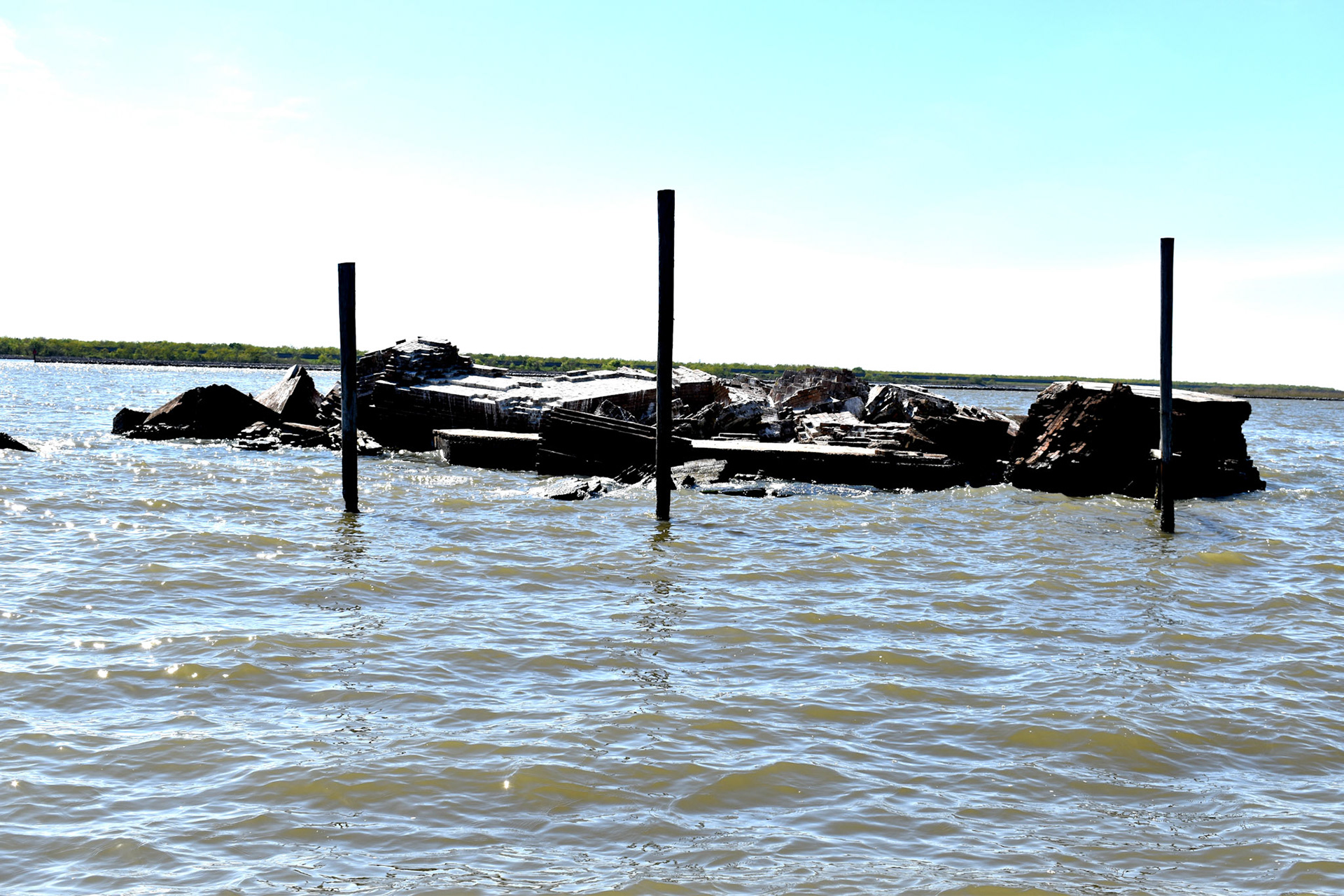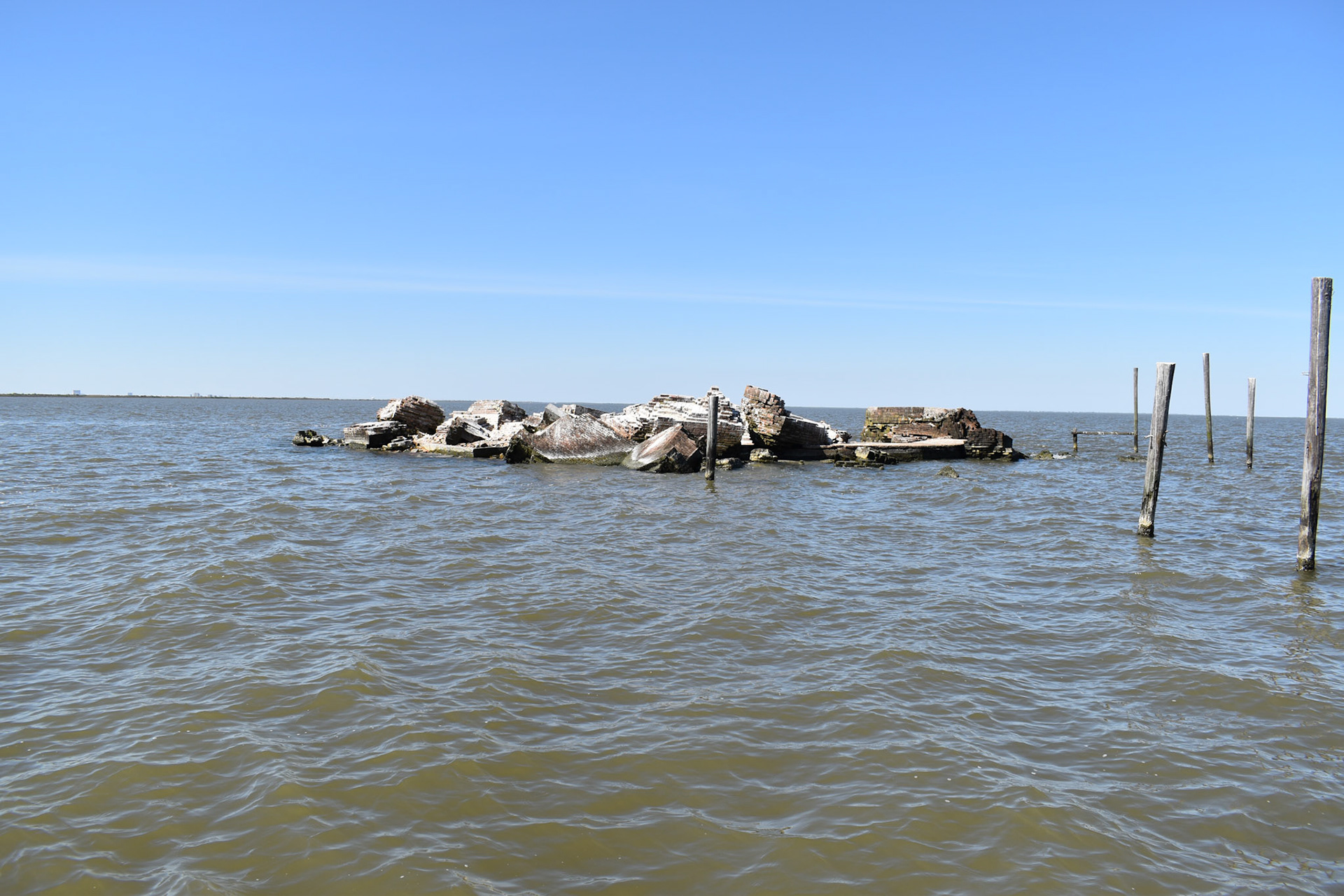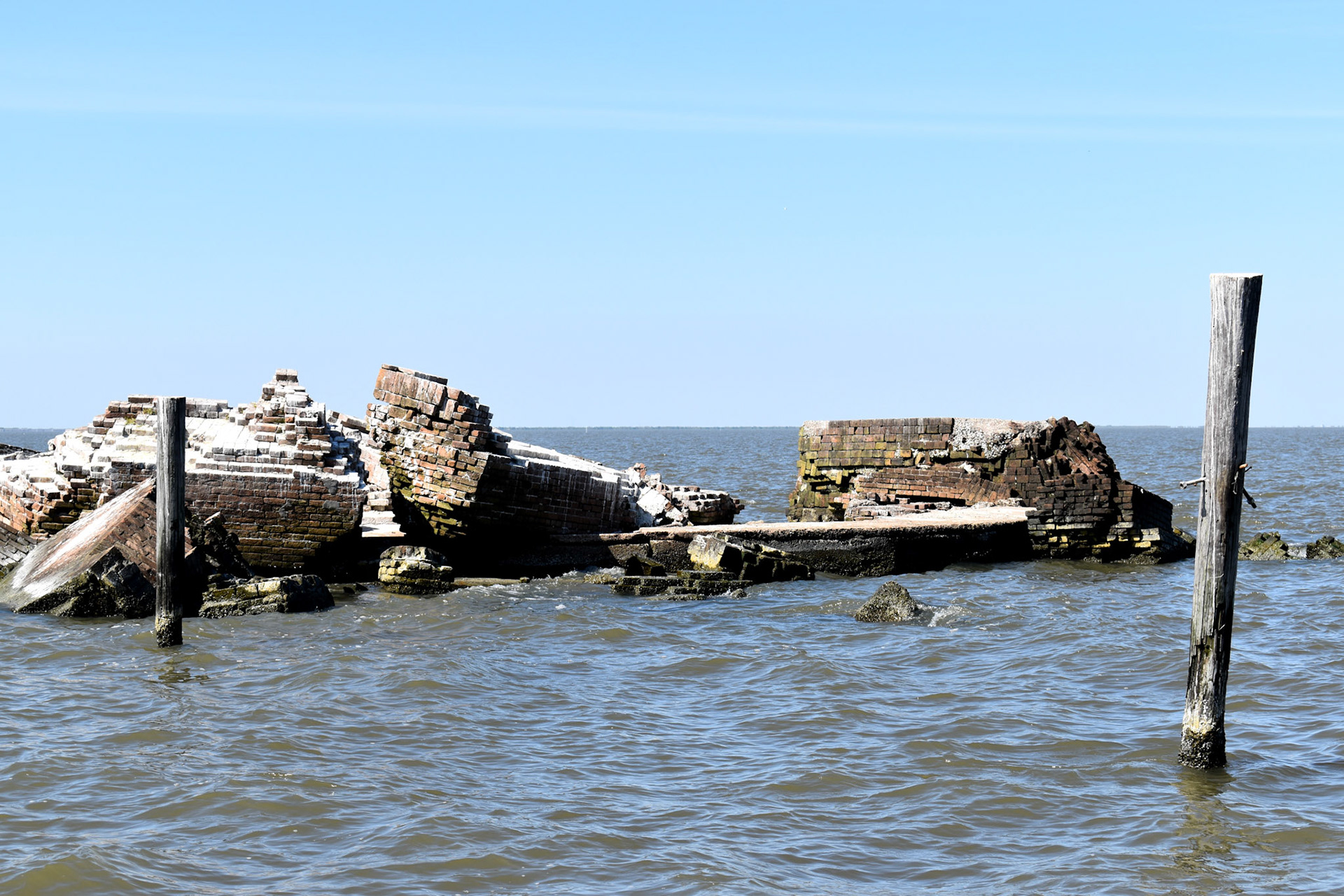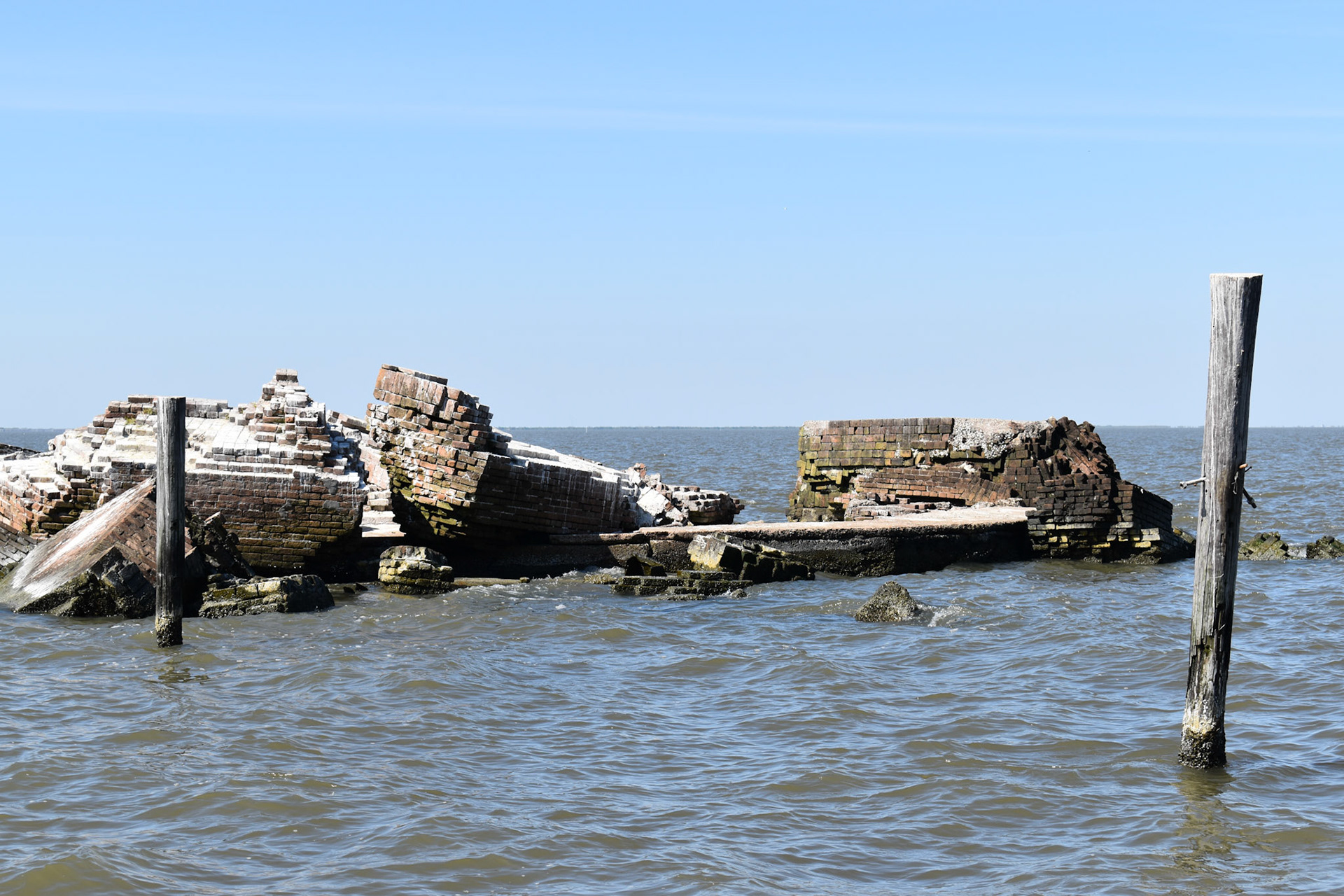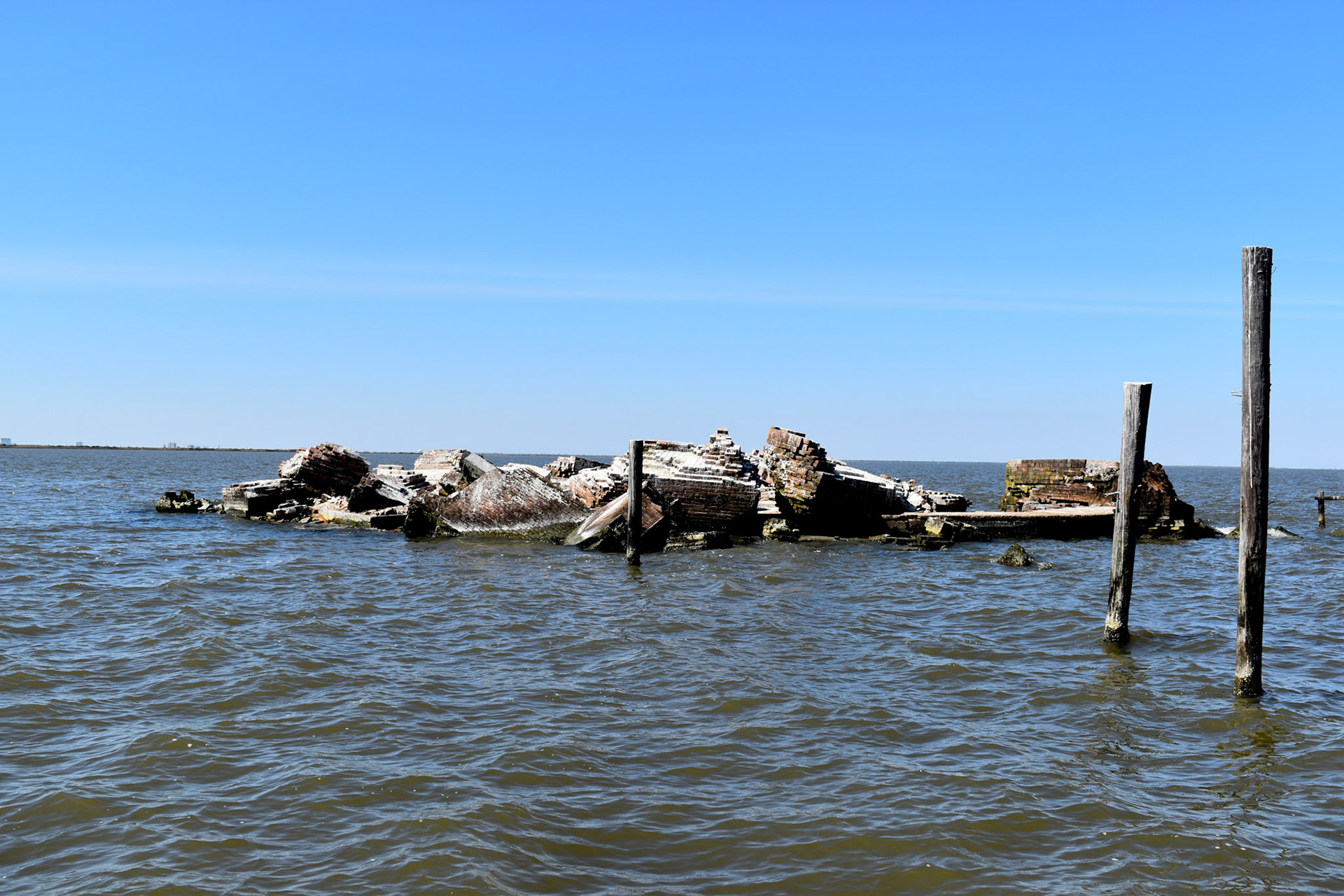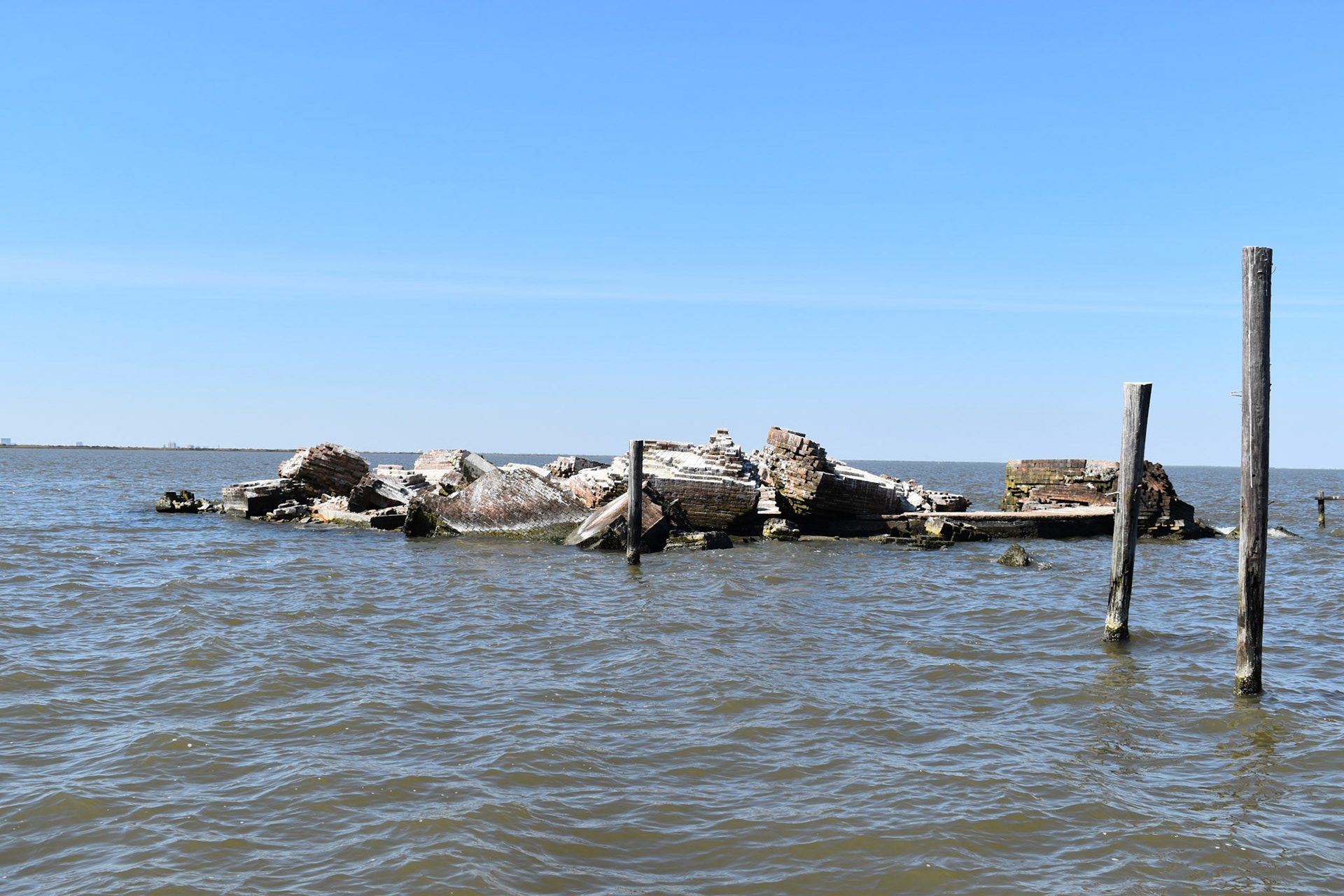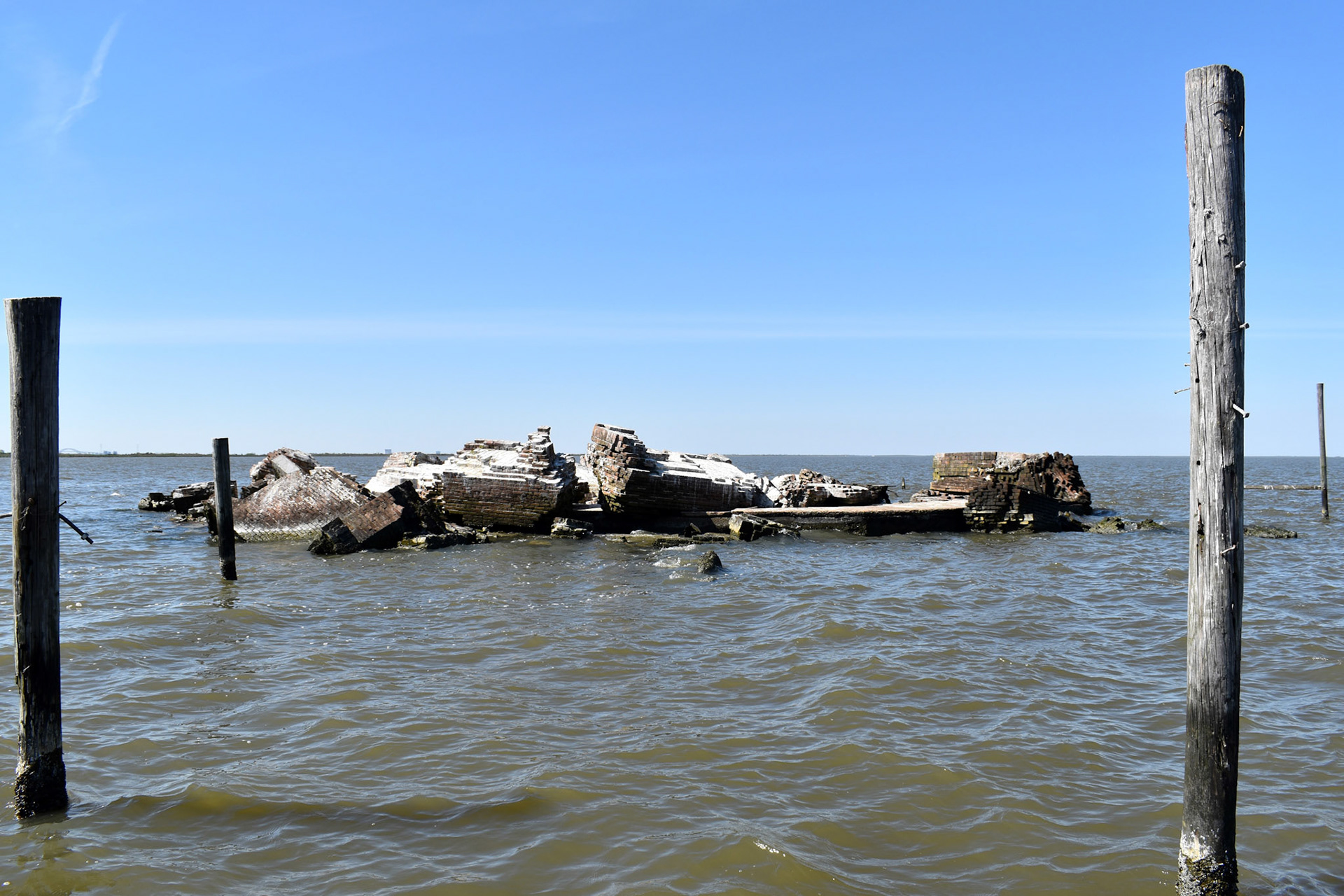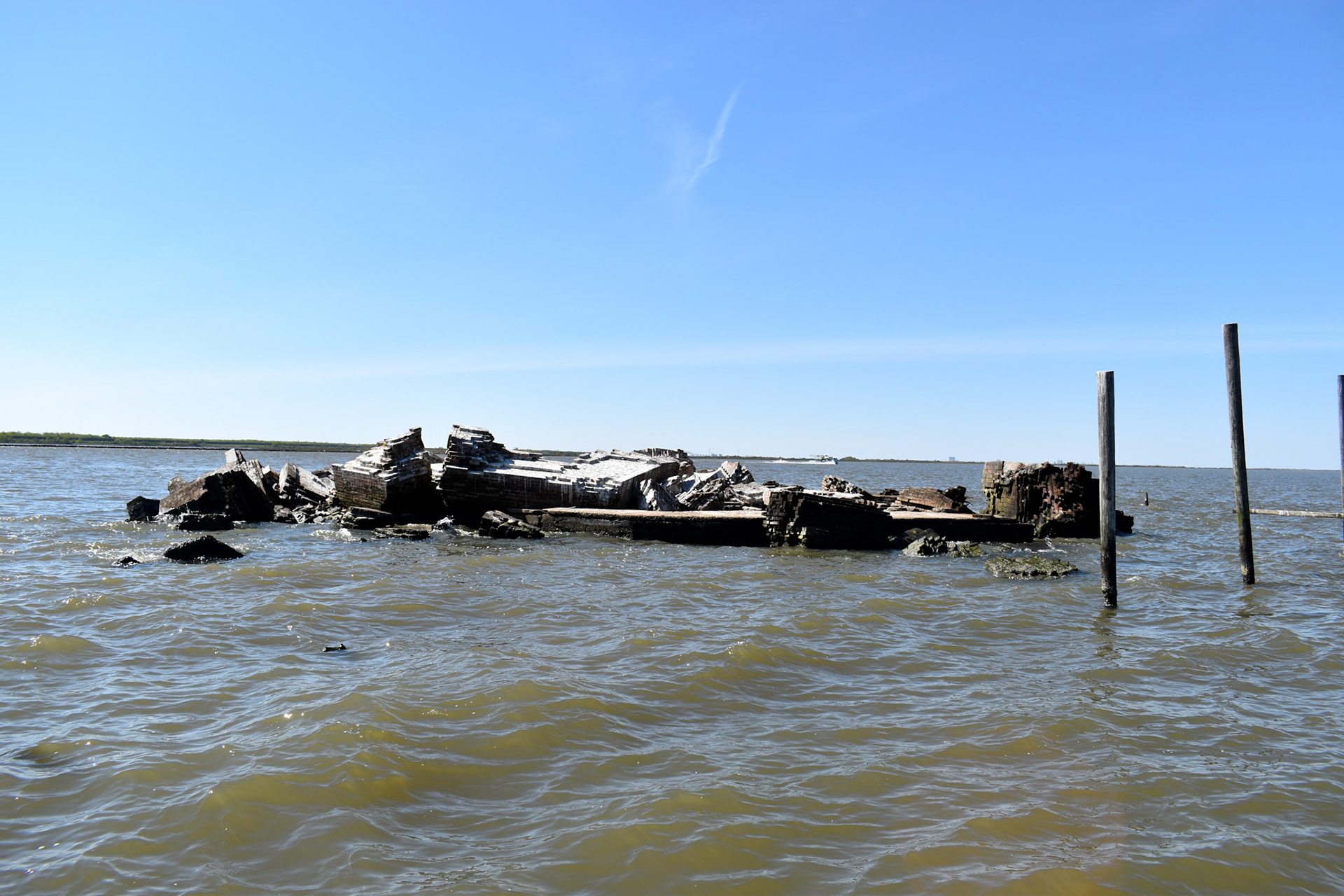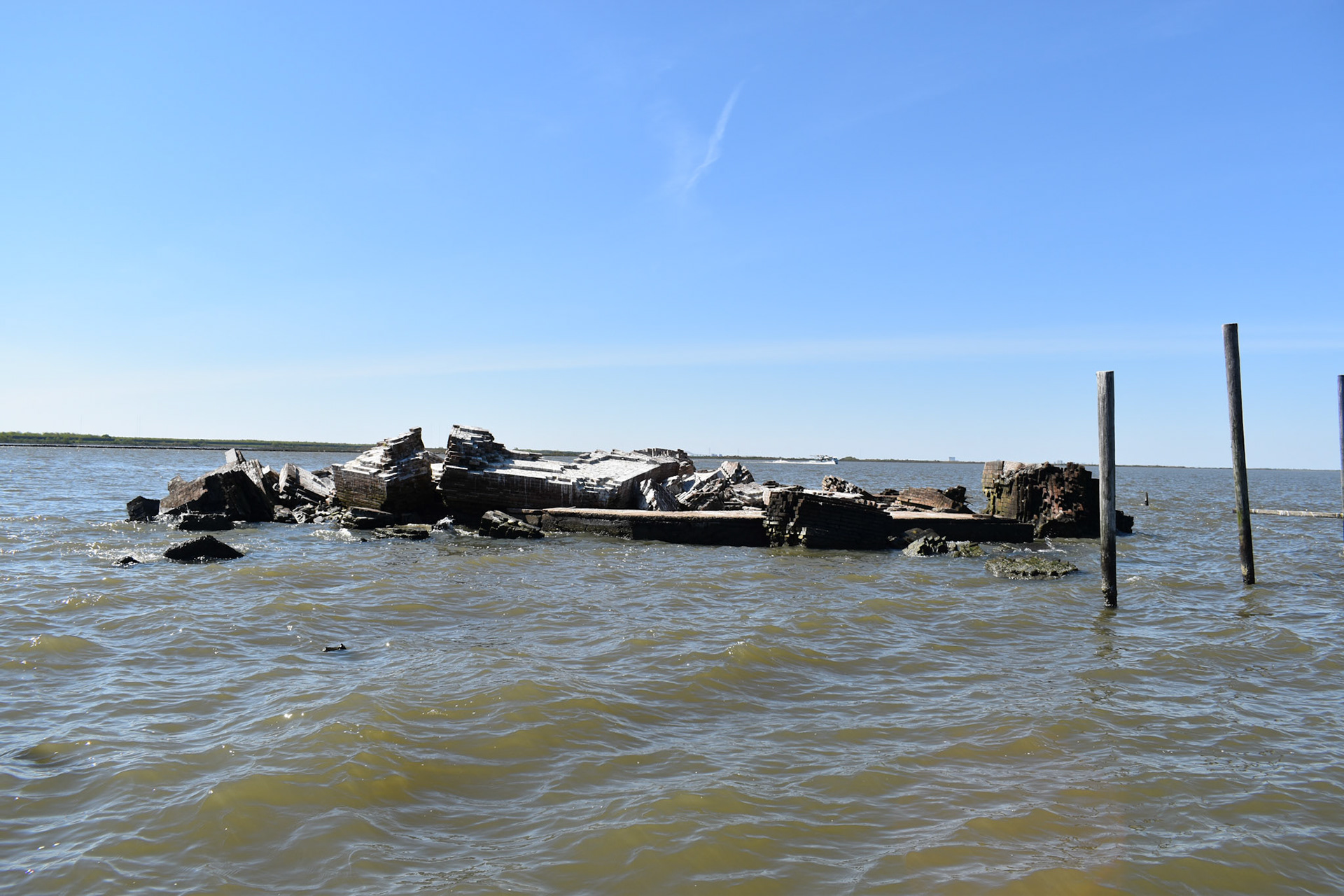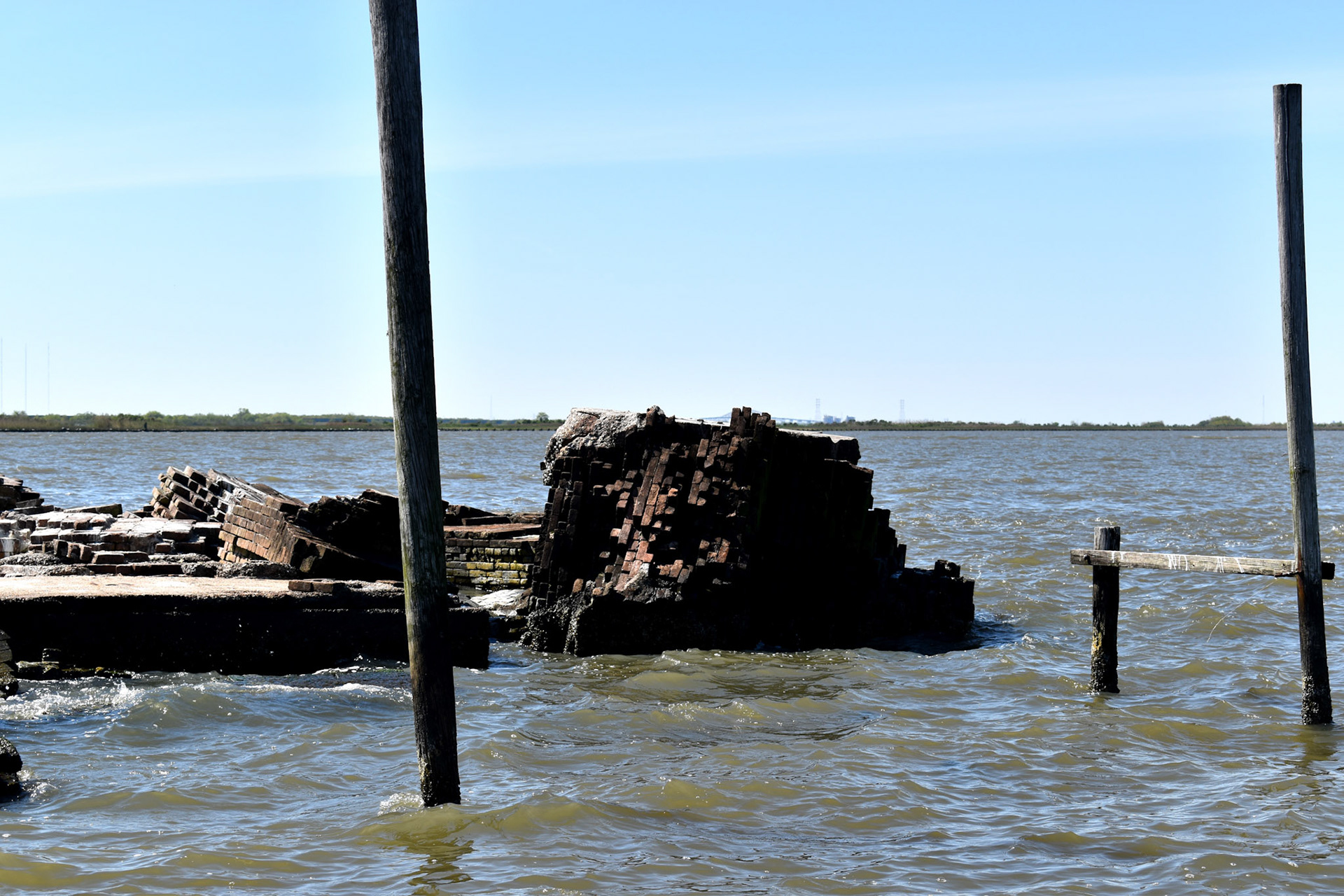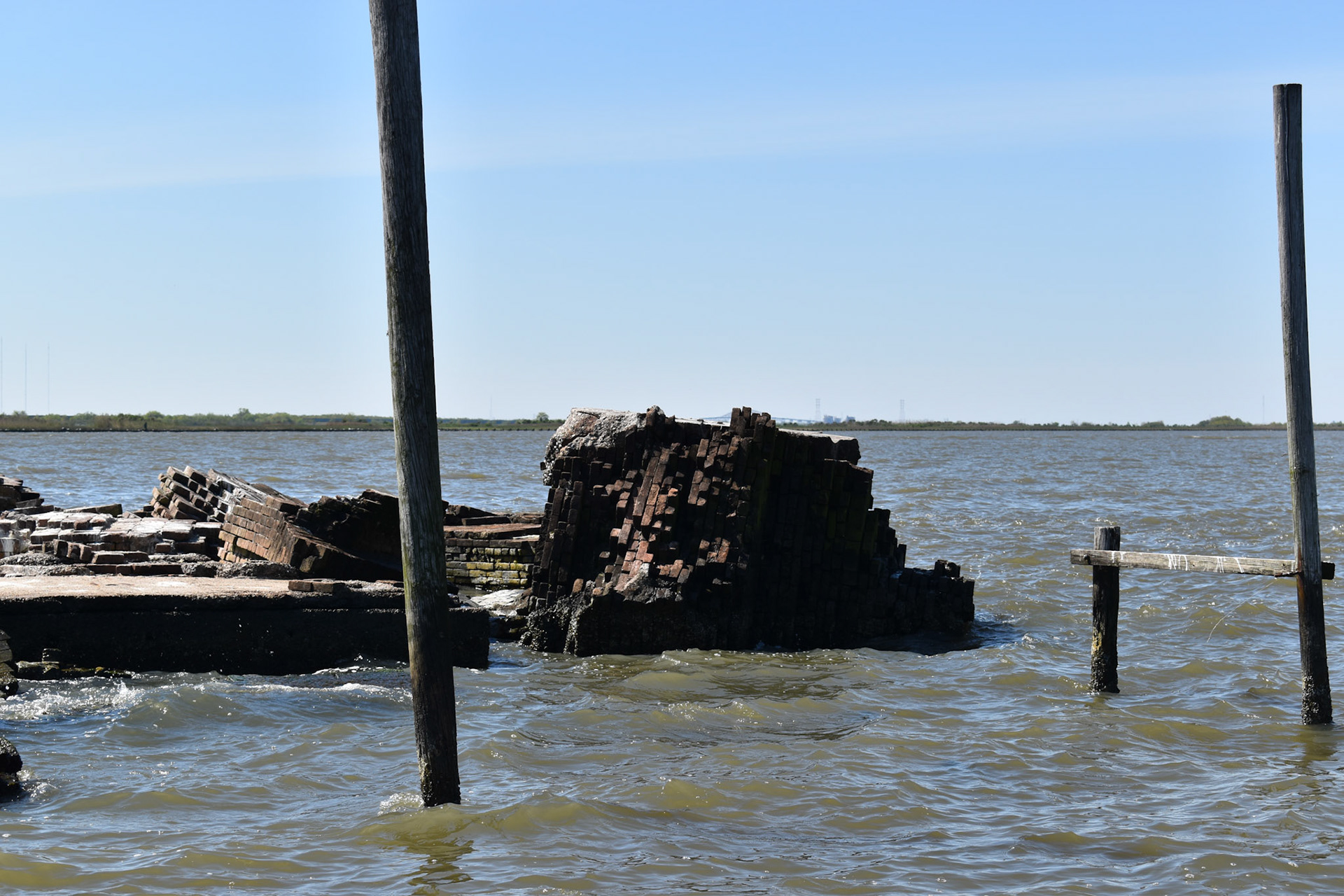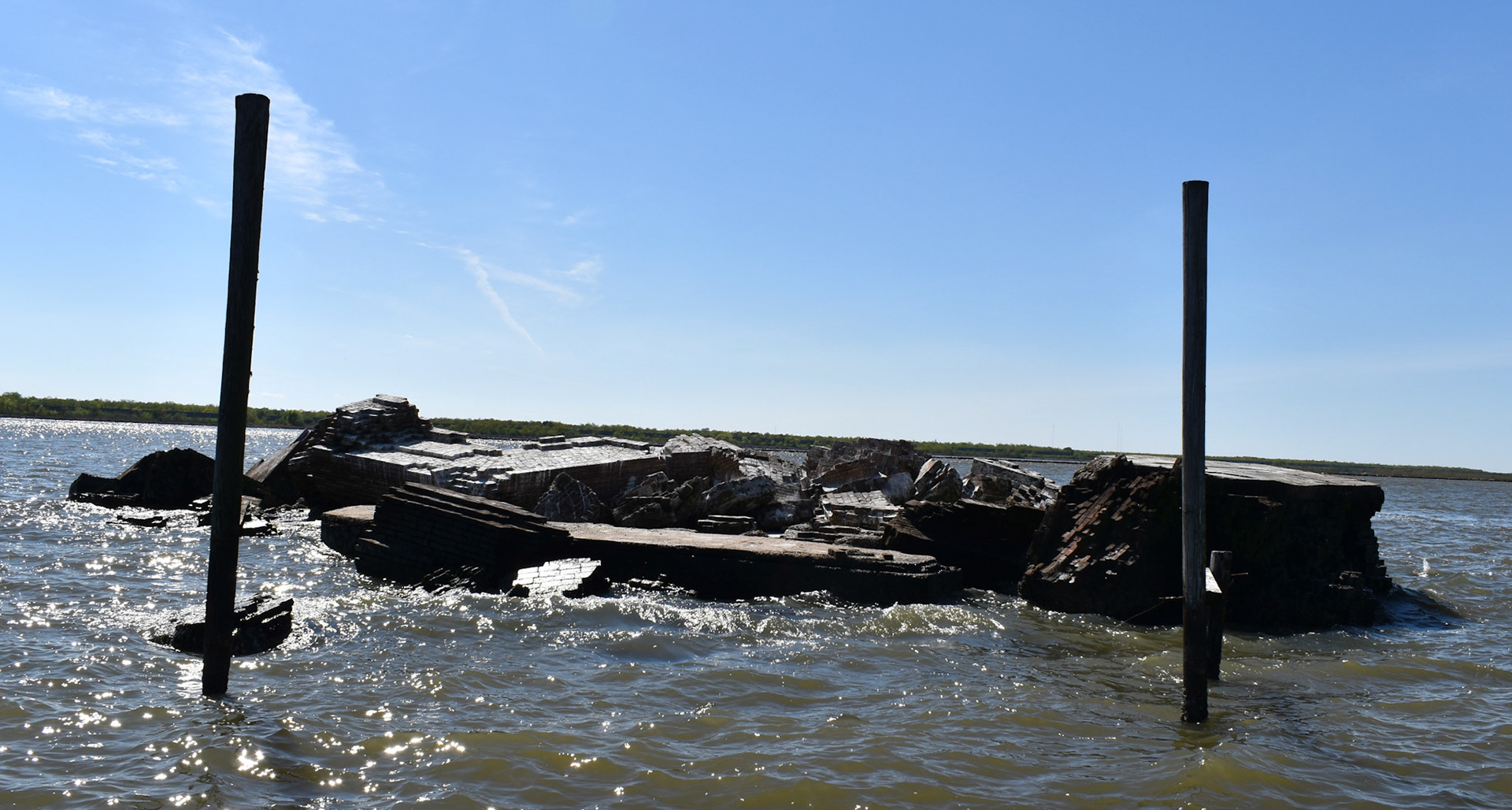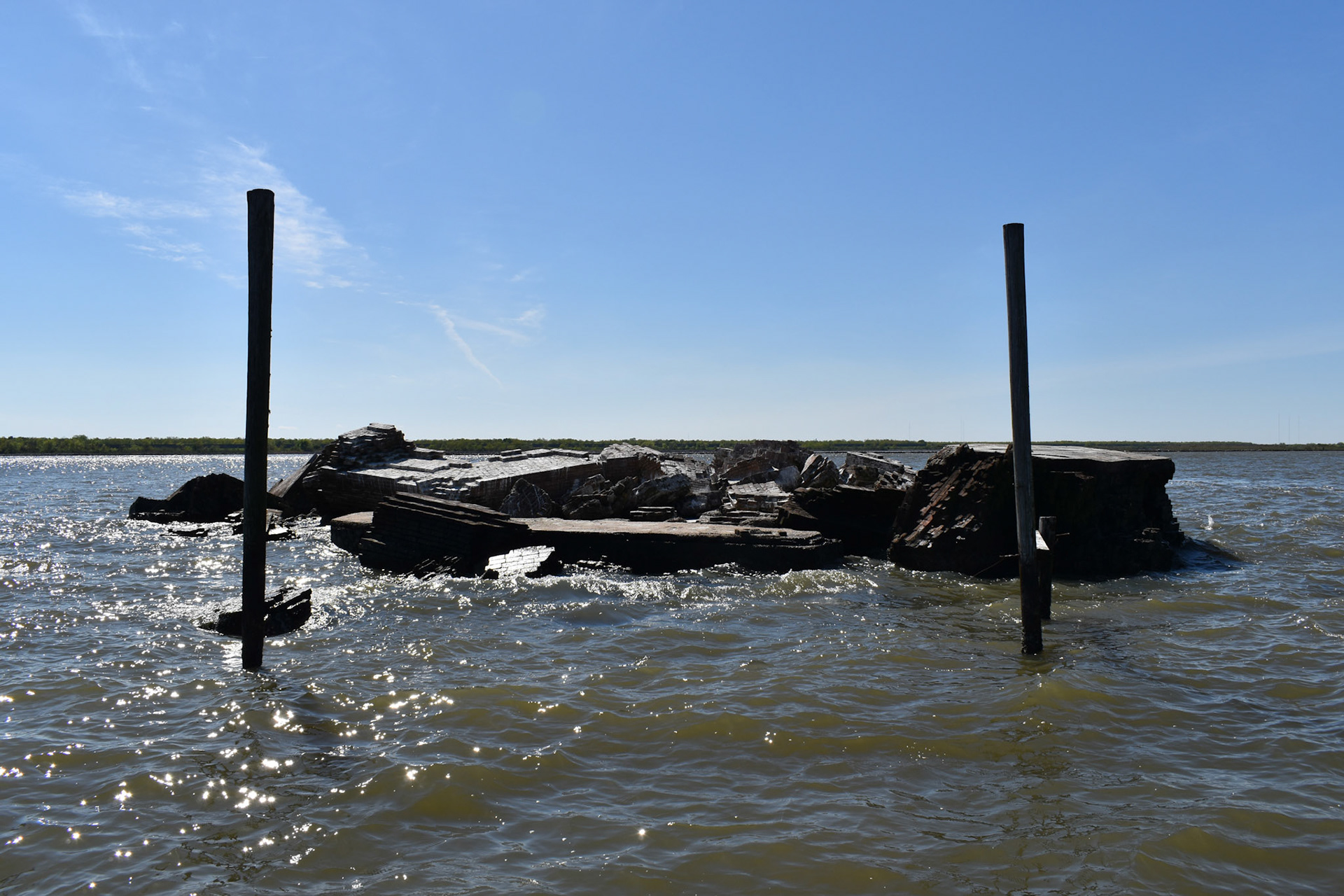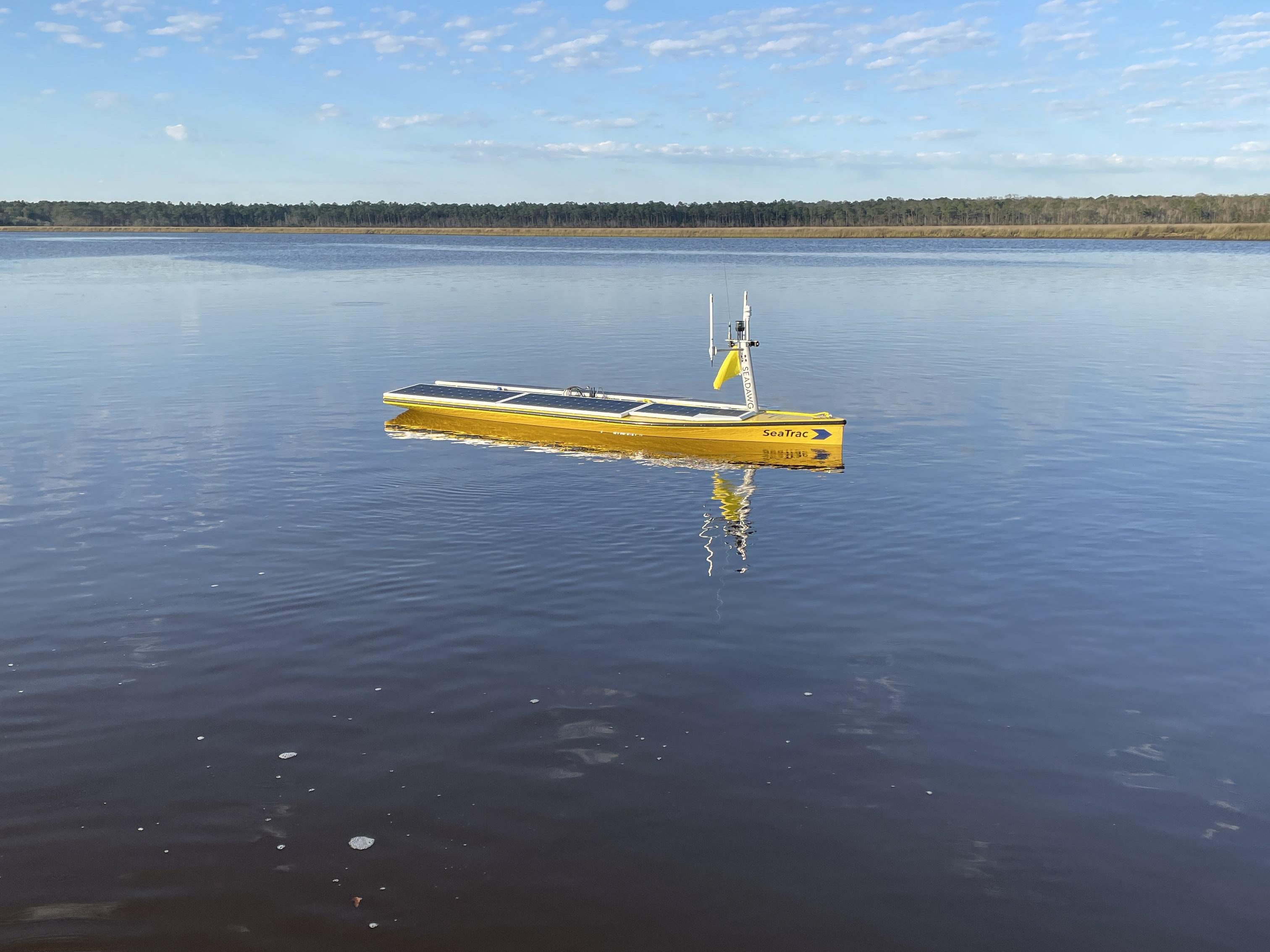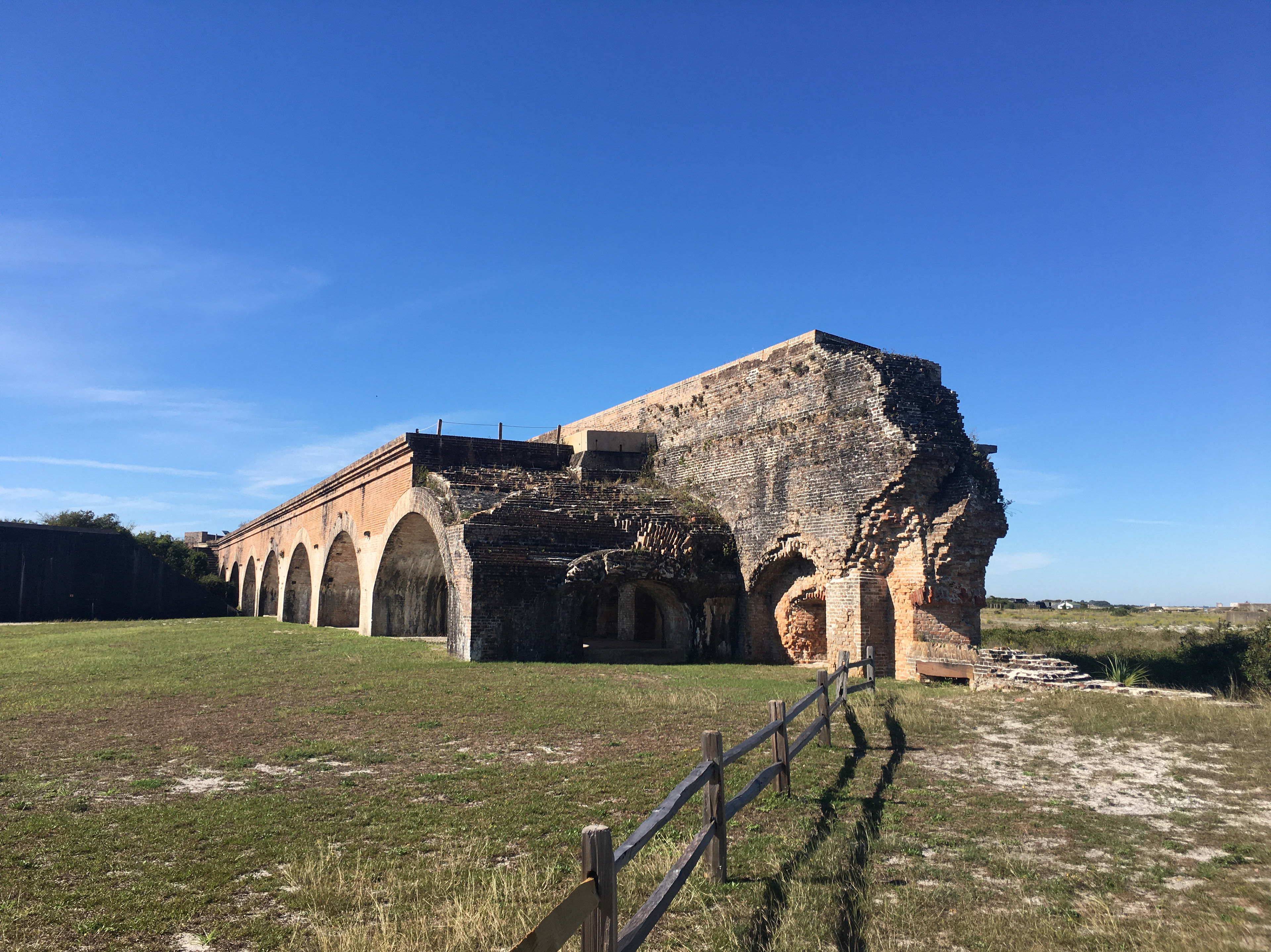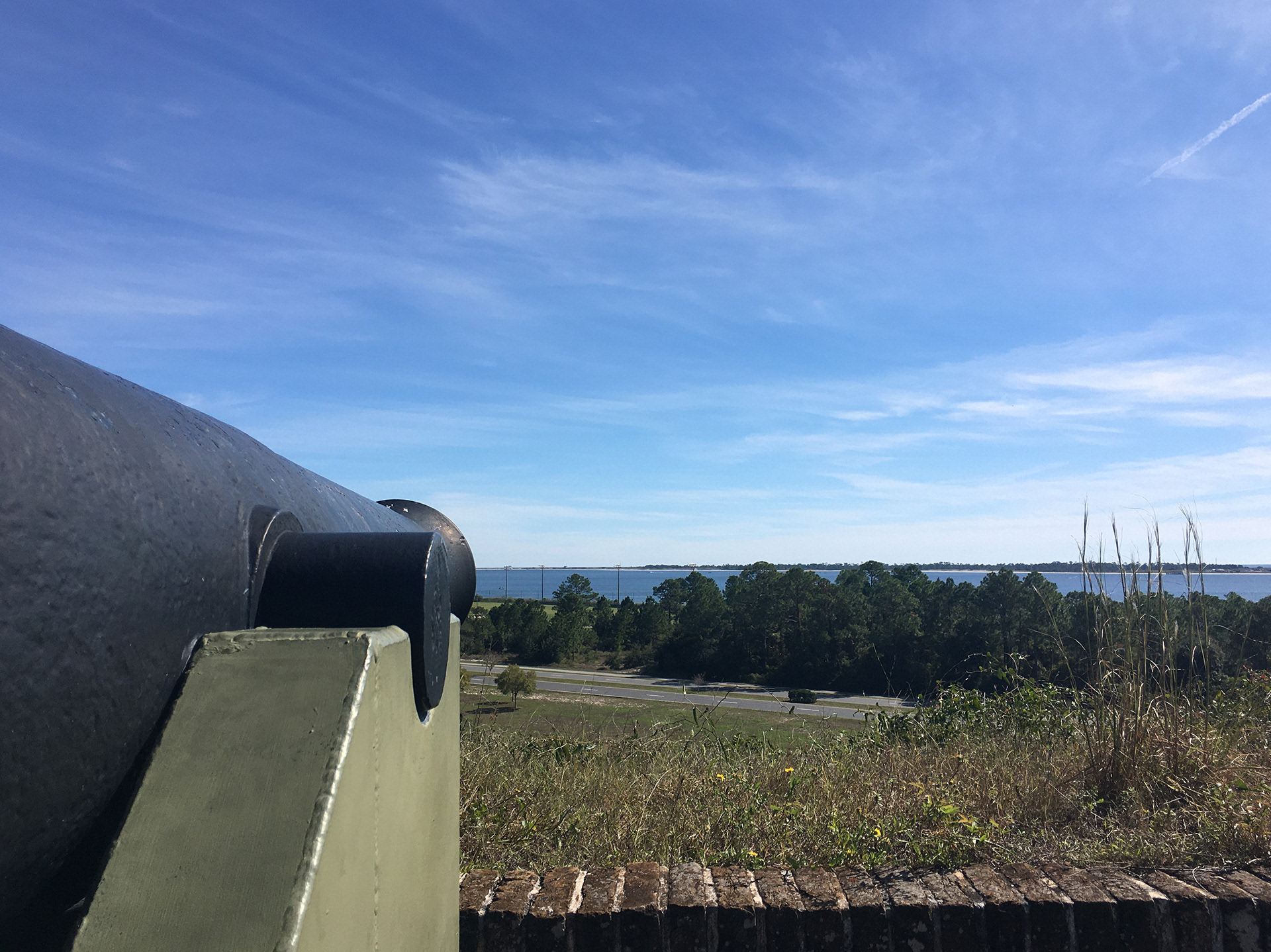Tower Dupre was the inspiration for this entire project. I originally began developing this idea before Hurricane Katrina. Conceived as an expedition to document the fortifications, lighthouses and historic properties along the US Gulf Coast, not so much out of fear for their loss, as I had never experienced such an event as "Katrina", but more so due to a keen interest in coastal history and how it helped to forge our nation.
Following Hurricane Katrina, and the destruction she wrought on our coast, my interest became more focused on preserving history as it was, for the future generations.
One specific fortification that has now been lost to history, entirely destroyed by Katrina was a gun emplacement in Lake Borgne on the Mississippi River approach to New Orleans. Built as a fortified two-story hexagonal tower guarding the entrance to Bayou Dupre from Lake Borgne, located in St. Bernard Parish, Louisiana.
Part of the original harbor defenses of New Orleans and the mouth of the Mississippi River. Tower Dupre (1830-1883) - Part of the Third System of coastal defenses, was a fortified artillery tower which was first established in 1830 at the entrance to Bayou Dupre, in St. Bernard Parish, Louisiana. The fortification was Abandoned in 1883. Construction was initiated in 1827 and was finished in 1830. The initial mounting of the cannons was delayed until 1833. The tower required constant maintenance and repair because of its continuous exposure to Gulf Coast storms and erosion. Eventually, the tower became entirely surrounded by water. The tower was originally designed to mount 24 guns and hold a garrison of 50 troops. However, it was more typically garrisoned by a three-man artillery detachment operating out of Fort Macomb (as previously discussed). Due to exposure to constant storms and erosion associated with the Gulf of Mexico, the tower required continuous maintenance and over time it, like many others in the area became surrounded by shallow water.
During the Civil war, the tower was garrisoned by the Confederate army until the fall of New Orleans in 1862. After the end of the war additional repairs were made but, by 1883, the tower was declared surplus to government needs and was sold.
